Everything Olive Oil: A Guide to the History and Health Benefits of Quality Olive Oil
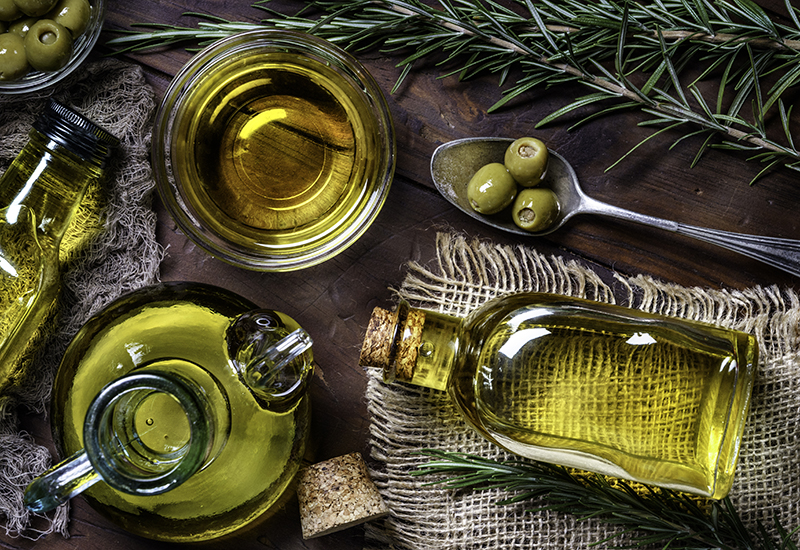
The information and imagery in this post were provided courtesy of Heinen’s certified Wellness Consultant, Andrea Slobodian. Interested in learning more about wellness from Andrea? Join Heinen’s Club Fx and schedule a free one-on-one session to discuss your personal health goals.
Olive oil has a long documented historical association with vibrant health and longevity. Nowhere is this more evident than in Mediterranean cultures. Countries such as Crete, Italy, Spain, Greece, Argentina, Chile, Portugal and the blue zones*, exemplify longevity and vitality in their people, well into old age. These cultures have low disease rates, with a high portion of their populations living into their 90‘s, and even centenarians living disease-free.
*The blue zones are regions in the world that have a very high number of centenarians and a general high level of health and longevity due to their daily lifestyle. Examples of blue zones include Ikaria, Greece; Sardinia, Italy; Okinawa, Japan; Nicoya Peninsula, Costa Rica; Loma Linda, California.
Olive oil, the pressed juice of the olive fruit, used liberally, has been a main cornerstone of the Mediterranean cultures’ overall balanced, health-preserving daily lifestyle. This is something to take notice of. When asked for the secret to their longevity and youthful appearance, many centenarians living in Mediterranean regions name olive oil as their special elixir.
The History of Olive Oil
Throughout history, the olive tree has been a symbol of peace and abundance. Olives have been grown, harvested and pressed for their nectar for over 6,000 years, and evidence suggests that olive trees were the first fruit trees to be domesticated. The Mediterranean region initiated growing and cultivating the trees of this divine fruit. In modern times, the olive tree has spread worldwide and is now cultivated in 29 countries including the state of California in the United States. Approximately 90% of olives grown are used for olive oil production, while 10% are used as table olives.
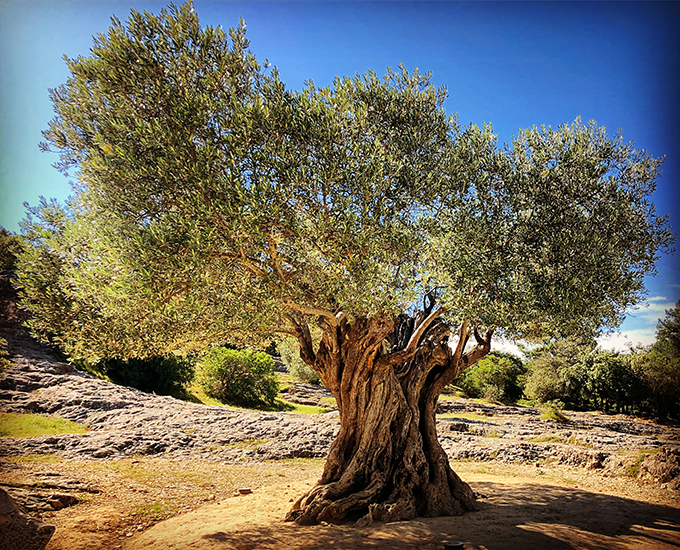
The Health Benefits of Olive Oil
Olive oil was held sacred and revered by the ancient Greeks and Romans, not only for its application as food and overall positive affect on health, but also as a nutritive and enriching healing oil. Folklore has it that the Goddess Athena drew the olive tree from the ground and gifted it to the city of Athens “to nourish and heal all wounds and ailments.” The people named the city in her honor because they so valued the gift that she gave them.
In the Mediterranean region, olive oil is well known for supporting healthy hair, skin and body, as well as providing support for a long life. Both Cleopatra and Sophia Loren were known to have nourished their skin with this “nectar of the Gods,” and cherished it for its benefits.
Because olive oil is rich in monounsaturated fatty acids, it is a healthy, very digestible heart-friendly fat. High in antioxidants such as polyphenols and vitamin E, it helps fight oxidative stress and free-radical damage in the body, which is the predominant contributing factor to its anti-aging. This is also why it is good for the skin. The FDA recommends consuming two tablespoons of extra virgin olive oil (EVOO) daily for heart health, while the Mediterranean’s take in 4-6 tablespoons daily.
Reasons to Use a Quality Olive Oil
- Acts as a natural anti-inflammatory
- Supports healthy brain function and memory
- Supports healthy bones
- Supports healthy weight
- Supports healthy cholesterol levels
- Can reduce the risk of arterial inflammation and improve blood vessel elasticity
- Protects blood cells from oxidation
- Can reduce the risk of health imbalances such as Alzheimer’s, cancer, diabetes, stroke and heart disease
- Can lower the incidence of mood disorders like anxiety and depression
- Nourishes, rejuvenates and protects skin and hair
- Helps ward off free radical damage and prevent cell degradation, when applied topically to the skin
- Contains squalene, which helps improve skin elasticity, keeping it firm and toned as you age
- Can be attributed to longevity, overall vitality and a youthful appearance
What Makes a High Quality Olive Oil?
High grade olive oil comes from the harvest and pressing of high-quality olive fruit. Growing, harvesting and pressing olives within a very short window of time after harvest, using a low heat processes and chemical-free extraction, creates the best aroma, flavor, hue, acidity and general flavor profile of oil.
If there’s one thing that holds true about olive oil, it’s that is should taste like olives. Single varietal olive oils are usually created in well-known growing regions with fine attention to the finished product. They can be used for special meals and where a rich, deep olive flavor characteristic infuses and enhances the food, such as for a salad dressing, dipping oil or a fine aromatic drizzle over vegetables, bean dishes, pasta or rice and fish or meats.
The best olive oils are Extra Virgin Olive Oils (EVOO). They contain the highest level of beneficial compounds and are carefully cold-pressed and extracted from the first stage of pressing. Each successive pressing offers lower levels of overall health constituents, so the oils are considered to be of lesser quality.
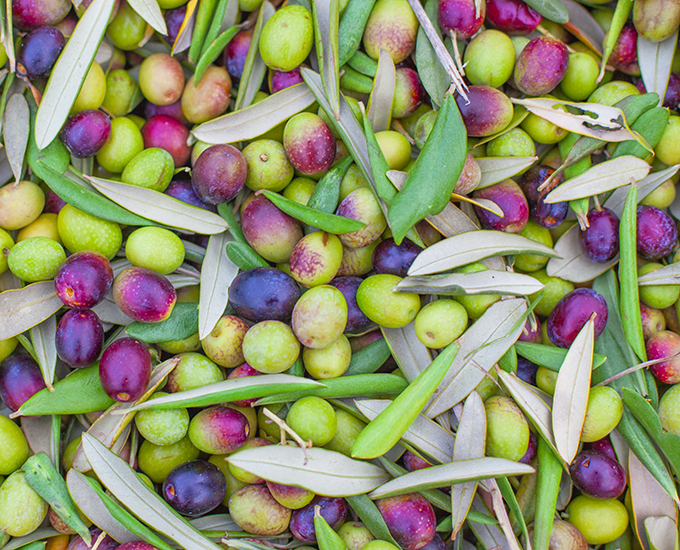
Variety and Flavor of Olives
Commercially, there are a few dozen olive cultivars used for olive oil from over a thousand varieties of olives grown worldwide. The flavor of the oil pressed is determined by the variety of olive used and how ripe the olives are at the time of processing.
All olives start out green (the un-ripened stage) and as they ripen, they change from a light brown to a reddish purple to the fully ripened black olive. Each stage of the ripening process yields a different flavor profile, and the olive degrades the moment it is pulled from the tree, so time is of the essence for processing.
Greener olives make a peppery, flavorful olive oil, but yield less oil. This oil is considered more desirable and is often more expensive. Fully ripened black olives offer a milder oil with a much higher yield, but the flavor is generally bland, so they generally cost less.
In Mediterranean countries, olive oil is used for baking olive oil cakes and other treats, adding a unique flavor all of its own. It is often drizzled over ice cream, fruits such as pears, oranges, apricots, figs and other simple desserts. In these regions, people use olive oil on their toast rather than butter. This also applies to vegetables and other dishes.
Traditionally, at the end of the harvest season, fresh citrus fruit is pressed in tandem with olives, which adds another beautiful dimension to the flavor profile of the olive oils produced. Lemons, tangerines and limes are preferable. Some oils are flavored with truffle oil.
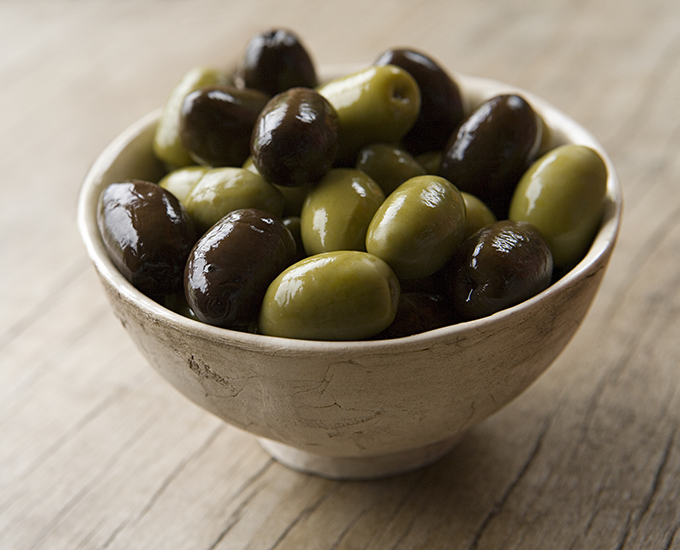
Olives Used in Oils at Heinen’s
- Koroneiki (Greece): Strong pungency, herbaceous flavor, high in polyphenols
- Abequina (Spain and California): Mild pungency with notes of apples and nuts, low in polyphenols
- Coratina (Italy): Strong pungency, herbaceous flavor, high in polyphenols
- Frantoio (Italy): Medium-strong pungency, herbaceous nutty flavor, medium level of polyphenols
Adulterated Olive Oil
Olive oil misrepresentation goes all the way back to ancient Roman times. Because of its popularity and high demand on the modern market, there are many olive oils that are adulterated or disguised as premium. Some are diluted, rancid or not even olive oil.
This is becoming more and more prevalent in the industry. Light and mild olive oils are highly processed to reduce the naturally present strong flavor of the olives, so their health benefits are minimal. These oils will not have the same health benefits as true potent EVOO. Some will actually have reverse health benefits, creating oxidative stress and inflammation in the body.
Does Olive Oil Have to be Expensive?
When it comes to olive oil, you generally get what you pay for, but there are exceptions to this. A lower-priced oil can still be good, and a high-priced exotic bottle does not necessarily mean that it is a high grade oil. This is where third party certification and research can be beneficial. The International Olive Oil Council certifies internationally, but this standard is not upheld in the United States. The California Olive Council label assures olive oil is extra virgin for anything grown in the U.S. The USDA standard for olive oil is voluntary and not enforced, so it pays to do your homework.
Above all, taste sampling will tell you if the olive oil is good. A good grade olive oil should taste bright, lively and offer a rich, full-bodied flavor with subtle notes that can be fresh, green, grassy, herbaceous, and range from peppery to buttery, with many other undertones.
If you are concerned about price, a lower quality oil can be used as an everyday cooking oil. Simply make sure that it is truly 100% cold-pressed EVOO and not adulterated. Not all EVOO is cold-pressed. Finishing with a higher quality oil after cooking can add truer, richer, deeper and more complex flavor to dishes, while allowing you to extend the life of a more expensive, healthy olive oil.
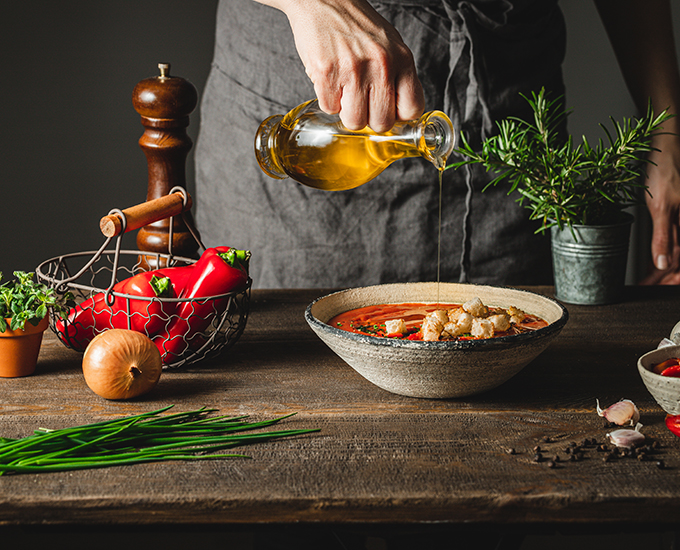
Qualities to Consider when Purchasing Olive Oil
- Labeled 100% olive oil, first cold-pressed, EVOO
- Bottled in dark glass to extend the shelf life and preserve the health properties of the oil
- Harvest date/press date printed on the bottle
- An expiration date within 12-18 months of the harvest date
- For the best flavor, look for single varietal oils labeled with the specific variety of olive used.
- Single country of origin
- Labeled with the original growing region. Some locations are renowned for supreme olive oil due to soil quality, weather conditions and the old cultivars that are grown.
- Estate grown. Some estates are known for their long family history of making high quality olive oil and have been growing and pressing olive oil for centuries. The trees can be hundreds and even thousands of years old and produce original olive varieties unique to the region that cultivates them.
- Olives harvested at the peak of flavor (determined by the integrity and experience of the company)
- Pressed within a short window of time after harvesting (highest grades are within 6 hours) and available for purchase close to that date.
- Hand-picked by small artisanal producers (most olives are machine harvested)
- Color is not an indicator of quality. High grade olive oil comes in different hues. Natural colors can range from gold to beige to deep green depending on the olives used.
- Flavor – Olive oils range in flavor.
- Bouquet – The aroma of the olive oil
- Did the oil make you cough? Oils high in polyphenols will tickle your throat and make you cough!
- Consider organic or companies that “do the right thing.”
- You should love your olive oil. It should enliven your taste buds, enhance your eating experience and make it deeply pleasurable, as in the true Mediterranean lifestyle. The full-bodied taste and aroma is all part of the experience.
The Nuovo Experience
The absolute primo olive oils are called “Nuovo,” meaning “new” or “fresh”. These are the oils that are fresh-pressed at the beginning of the harvest season and used immediately for the ultimate olive oil experience. Celebrations are organized around this first-of-the-season harvest-to-table pressing, and revered for the special intoxicating aroma, distinctive flavor and unique high-level experience of the precious oil extracted. It is a much-anticipated feast that takes place at the same time the oil is being pressed. Everything served is drizzled and doused in the rich-flavored, newly drawn aromatic oil and celebrated as an annual harvest ceremony, ritual and cultural gathering.
A true fresh quality olive oil will make you cough after sampling due to the high levels of polyphenols hitting the back of the throat. In Italy, they rate an olive oil based on how many times you cough when you taste it! Nuovo oils are extremely high in polyphenols, so they have this strong characteristic due to being carefully fresh-pressed, bottled and served within a short period of time. These very special oils are less available commercially, as the higher quality oils, pressed in smaller quantities, are usually reserved and generally kept within the country of origin. There are some exceptions to this, as they are starting to be equally valued outside of the countries that cherish them.
How to Store Olive Oil
Once you open a bottle of olive oil, it should be used within 30-90 days. Store in a cool dry place, away from heat or a stove. Ideally, a dark kitchen cupboard is the perfect storage spot. Refrigeration is not necessary if stored properly. Temperature, light and time are what degrades olive oils precious healing benefits.
How to Host and Olive Oil Tasting
You can start an olive oil exploration by hosting an outdoor olive oil tasting party with charcuterie boards, appetizers (tapas), salads, roasted veggies, good wine, bread, herbal dipping oils and shot glasses to sample the different olive oils.
This is a great way to experience the full flavor of the oils, see how you respond to the many olive oils available and try something new. Taste how a new oil enhances your favorite recipe! Have fun and enjoy the flavorful experience!
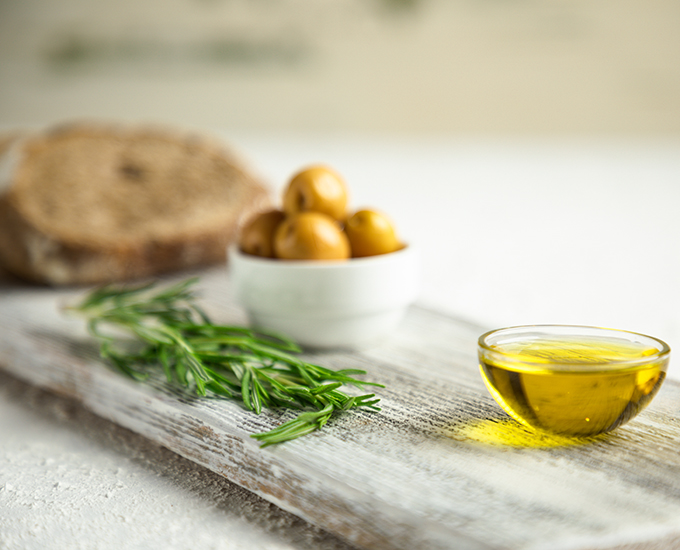
Simple Vinaigrette Recipe
Ingredients
- 2 Tbsp. high quality olive oil
- 1 Tbsp. lemon juice
- 1/2 Tbsp. vinegar of choice (apple cider vinegar or champagne vinegar)
- 1 garlic clove
- 1 Tbsp. fresh parsley, chopped
- 1 basil leaf, finely chopped
- Salt and pepper, to taste
Instructions
- Measure ingredients into a small bowl and whisk lightly. Serve over prepared greens.
Olive Oils Available at Heinen’s
Heinen’s offers a wide array of olive oils of differing grades and growing region. All of the oils pictured below are 100% EVOO. Bon Appetite!
Organic
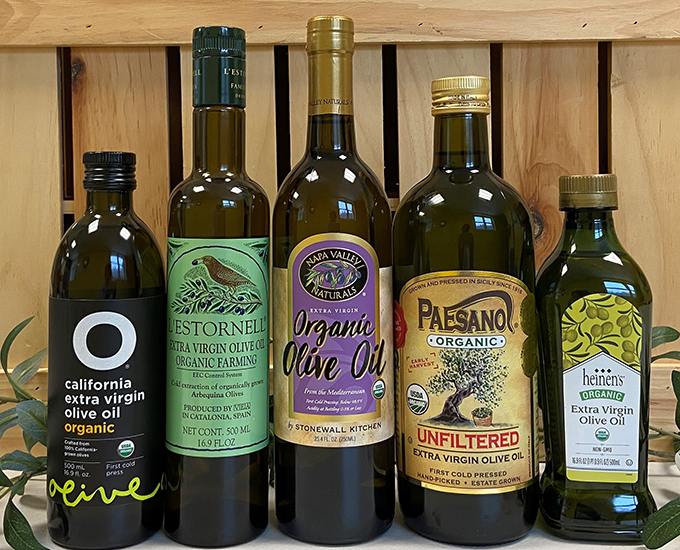
Italian
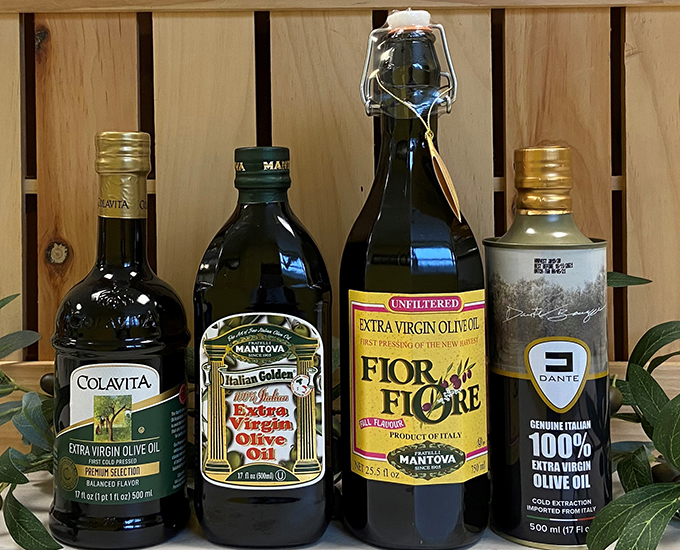
Spanish
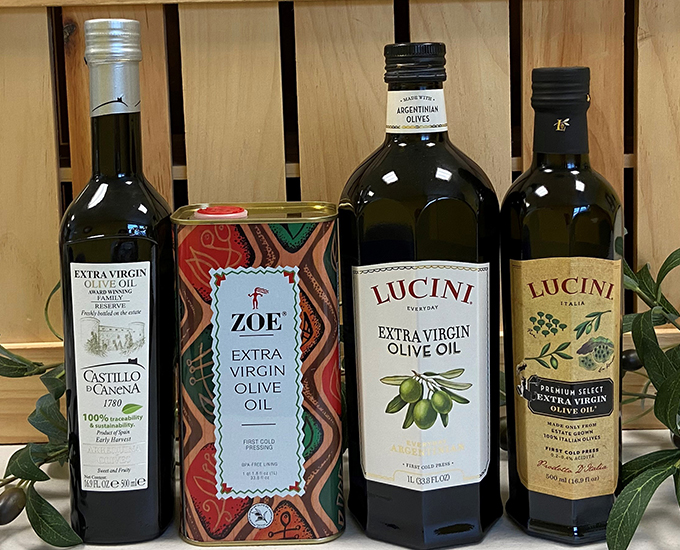
Greek
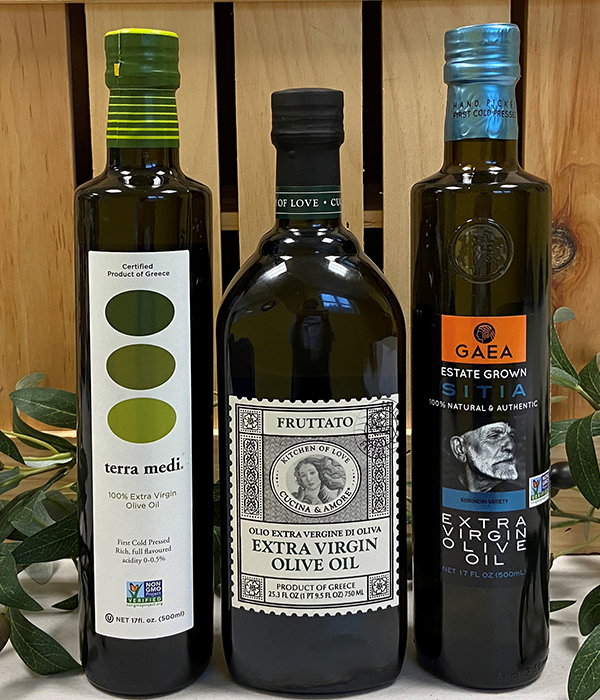
Californian
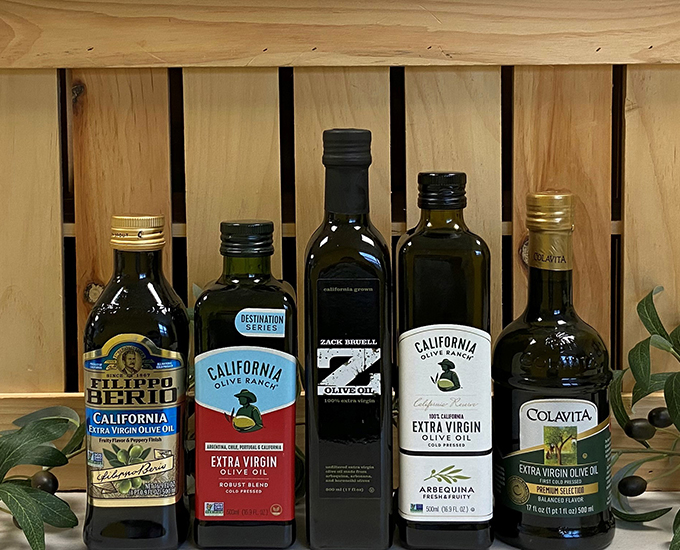
Top Shelf
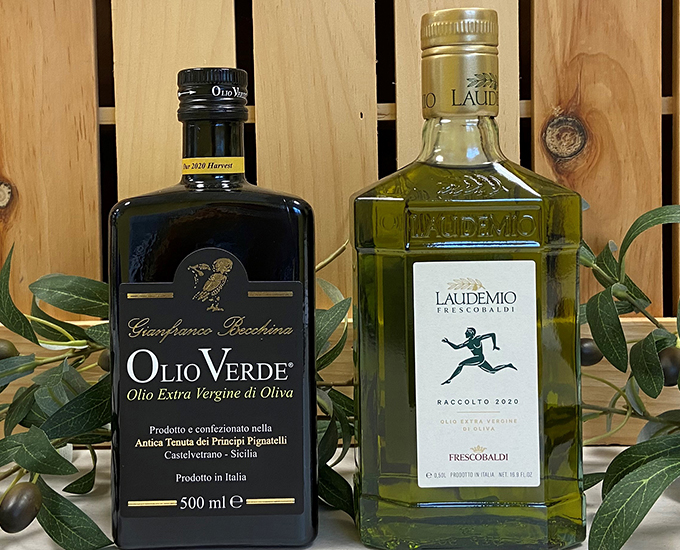
Learn More about Olive Oil
To further enhance your olive oil exploration, I recommend the following books.
- The Passionate Olive: 101 Things to do with Olive Oil By Carol Firenze
- Vegetarian Times Cooks Mediterranean – From the Editors of Vegetarian Times


